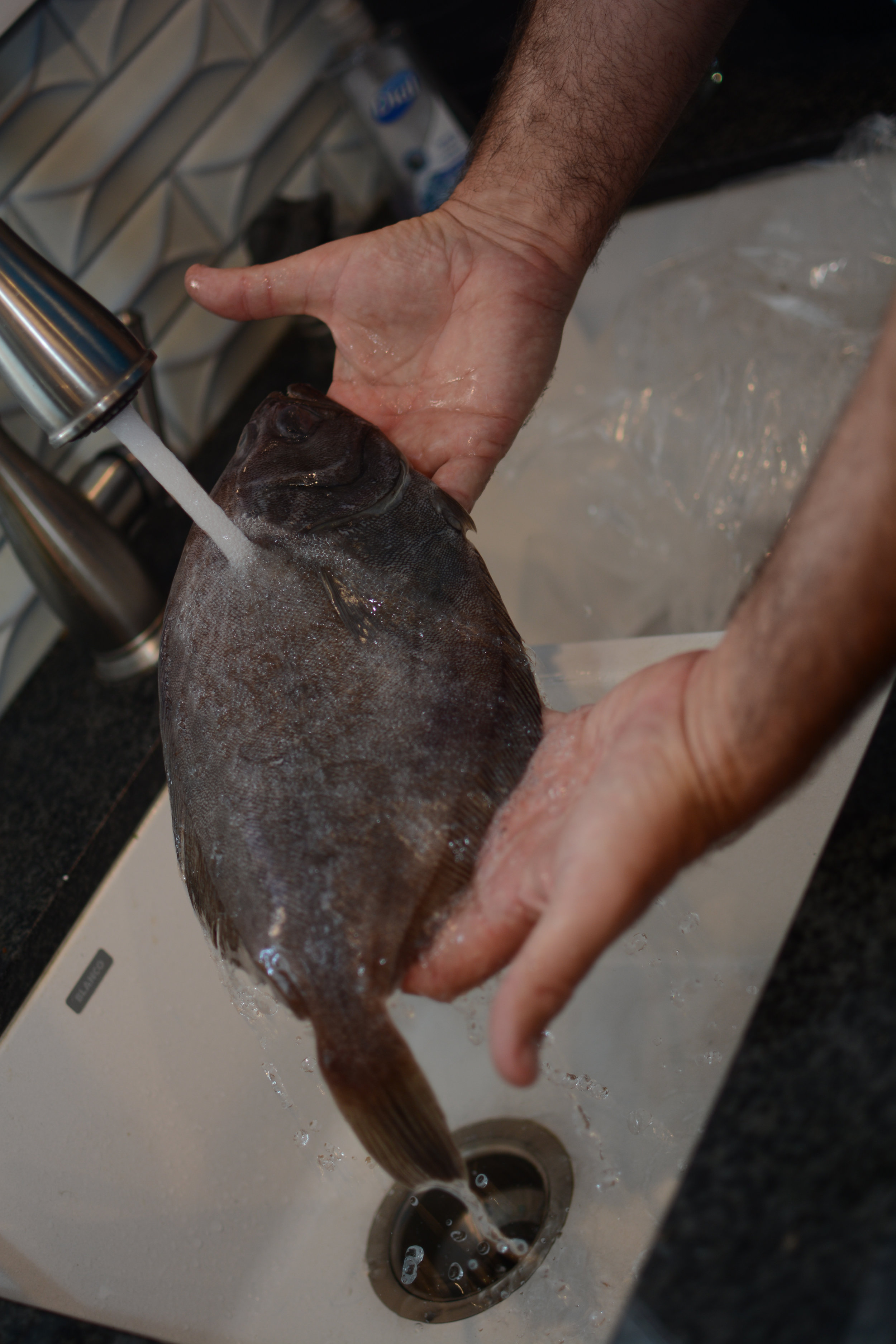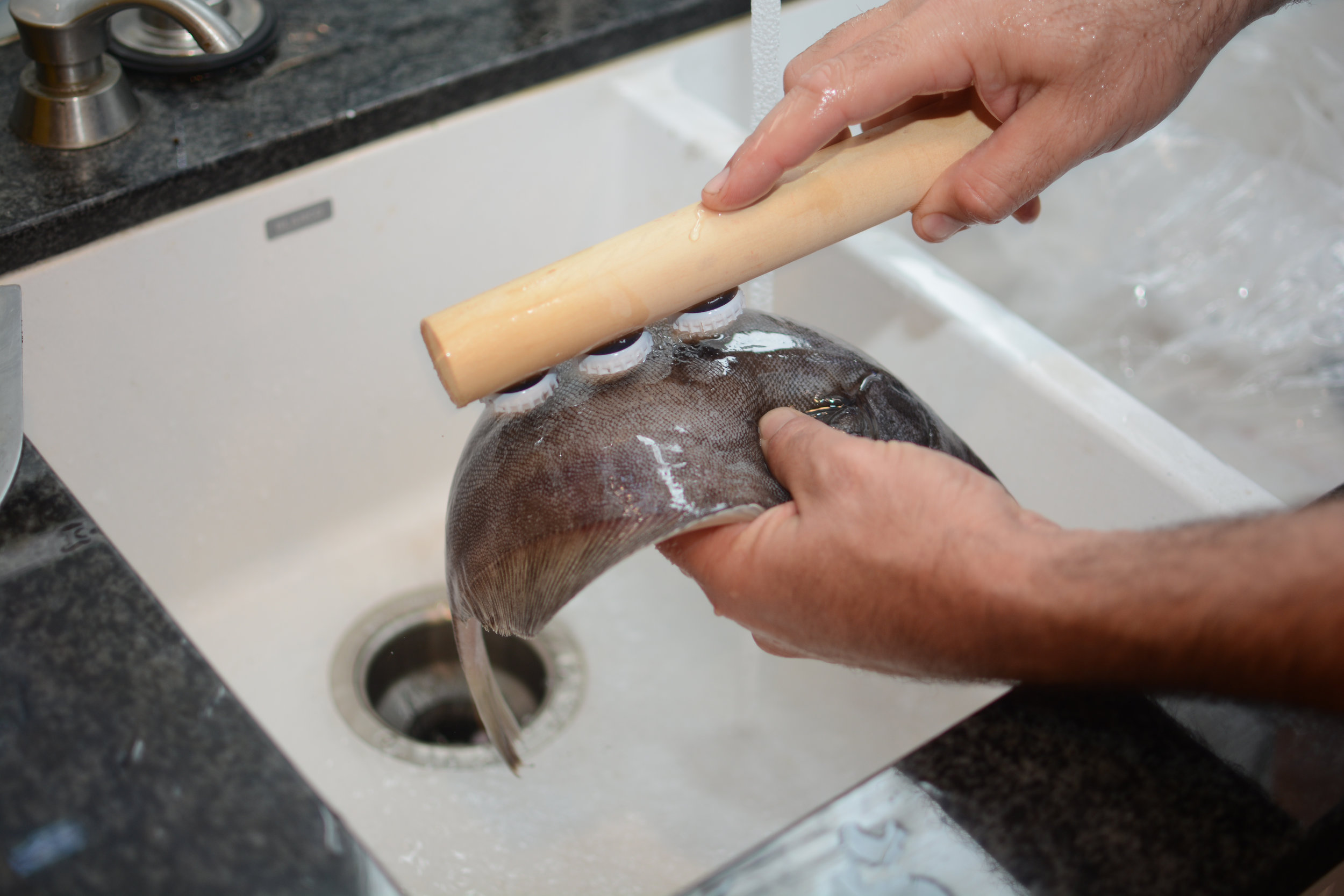pREPARING A FLATFISH
Flatfish look completely alien. Their shape defies our notion of what a fish should be. Their anatomy is unfamiliar. Those factors generally cause people to assume that they are difficult to work with, but flatfish are by far the easiest fish to work with. They are clearly marked with lines to guide the butcher. They have small, soft scales. They have relatively little viscera to contend with.
Flounders, halibuts, turbots, soles, sanddabs, plaice, and flukes all qualify as flatfish. They range from under 1 pound to over 500 pounds. I’ll focus here on the fish that you are likely to encounter in a market or on a fishing trip. These will be in the 1 to 20 pound range and they get processed about the same regardless of size. The only difference is what you might decide to do with the fish. Larger fish are best filleted while medium fish are good stuffed and tiny ones are best if pan fried whole. Let’s start with the smallest specimens first, as these are the easiest.
Preparing Flatfish to be Pan Fried
Rinse the fish and then remove the scales using a fish scaler or the back of a knife. If you don’t plan to eat the skin, this step is not really necessary. The skin will peel off easily after you cook the fish, taking the scales with it. I still do it, because I don’t like getting scales in my mouth, but flatfish scales are small and not that off-putting. Most people won’t even notice them in the unlikely event that one gets into the meat.
Next, identify the side of the fish that has the guts. They are adjacent to the gill plate. Follow the contour of the body cavity. It will be slightly rounded. Make your cut behind the gill plate from the base of the head to the other side of the fish, passing just behind the cavity as shown.
If you are planning to bake the fish whole or pan fry it, you are done. You can trim all the fins off with scissors if you like, but they come off very easily once the fish is cooked.
Preparing a Flatfish to be Stuffed
This is a common preparation for flatfish. They can be stuffed with shrimp, crab, sausage, vegetables, or actual stuffing. Begin by rinsing and scaling the fish as in the prior method. Make a cut from beneath the gills to the start of the fins and remove the entrails.
Then identify the lateral line. Cut along this line all the way to the bone.
Turn the knife and follow the contour of the bones all the way to the edge of the fins. Be careful not to cut any more of the skin. The only cut through the skin should be the lateral line cut.
Repeat on the other side.
This will create a pocket that can hold whatever you want to stuff it with. Don’t forget that there is meat on the bottom side too. Once you have eaten the top, you can lift off the frame and eat the meat beneath.
Filleting a Flatfish
This is a very pleasing activity because there is almost no waste. You will really feel like you have done justice to the animal when you hold the skeleton up to the light and you can see through it because you have cut it so well. For this method, you can skip the scaling steps because you are going to cut off the skin. Start by identifying the lateral line as before. Cut along that line along its entire length. Then, angle the knife out toward the edge and follow the contour of the bone all the way to the fins. Cut through the skin at the end.
Repeat on the other side and then flip the fish over. The operation is the same as on the top.
Your frame will end up looking like this:
Now place the fillets on a cutting board, skin side down. Hold the smallest edge possible and slide the knife between the meat and the skin, pressing it down tight to the cutting board, while being careful not to let the knife dig into the skin. You’ll end up with 4 fillets, 2 bigger and 2 smaller.
These fillets are delicate, but are generally flavorful and interesting. Treat them gently and be sure not to overcook them.






















